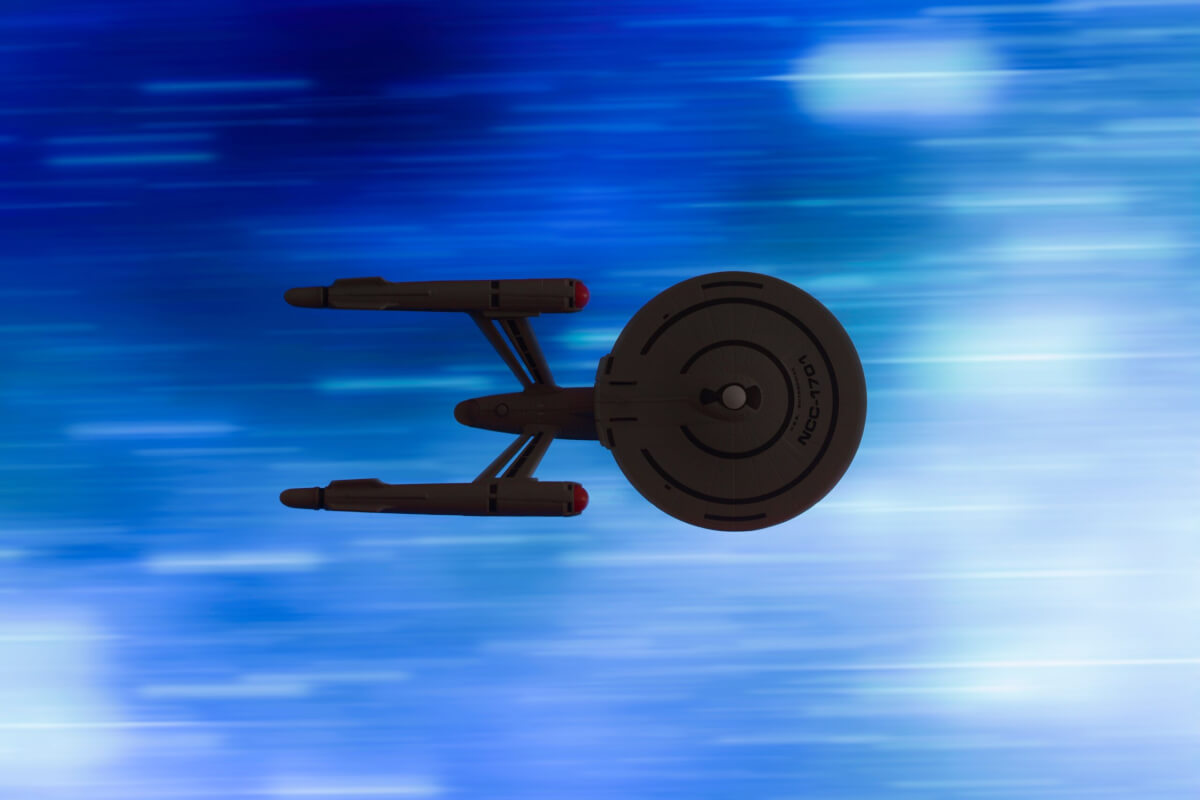NEW YORK — It’s a staple of science fiction: a spaceship zipping through the cosmos at faster-than-light speeds, boldly going where no one has gone before. According to Einstein’s theory of relativity, however, going faster than the speed of light is off-limits in the real world. So warp drives, like the one powering the Enterprise in Star Trek, have always been firmly in the realm of imagination — until now.
A new study published in Classical and Quantum Gravity suggests that a real-life warp drive might not be as far-fetched as we thought. The key, scientists say, is to look at the problem through the lens of Einstein’s theory of gravity: general relativity.
In general relativity, gravity isn’t a force like we normally think of it. Instead, massive objects like stars and planets create curves and dips in the fabric of spacetime itself. Smaller objects, like spaceships (or the apple that fell on Newton’s head), simply follow these curves. It’s a bit like how a heavy ball creates a dent on a rubber sheet, causing marbles to roll towards it.
The traditional sci-fi concept of a warp drive involves distorting spacetime in a very specific way: compressing it in front of the ship and expanding it behind. In theory, this would allow the ship to effectively travel faster than light without actually exceeding the speed limit locally. It’s almost like a cheat code for bypassing the laws of physics!
However, previous studies of this idea suggested that it would require exotic forms of matter with “negative energy density.” In our everyday experience, energy is always positive – even in a vacuum, there’s a small positive energy called the “vacuum energy.” Negative energy density, in physics terms, means having less energy than a pure vacuum. This is problematic because the known laws of physics suggest that such negative energy cannot exist in large enough quantities to make a warp drive possible.
This is where the new study comes in. The researchers, hailing from various institutions, including the University of Alabama and the Applied Physics Laboratory, decided to approach the problem from a different angle. Instead of starting with a preconceived notion of what a warp drive should look like, they asked: what kind of spacetime geometry could transport a ship faster than light while obeying the known laws of physics?
The answer, they found, involves a concept called a “shell of regular matter.” Imagine a bubble surrounding the spaceship, but instead of being made of soap, it’s made of massive particles or dark matter. By carefully controlling the density and pressure of this shell, it’s possible to create a “warp bubble” that compresses spacetime in front of the ship and expands it behind, just like the warp drive on shows like Star Trek.

The key difference from science-fiction shows is that this shell has positive energy density everywhere — no exotic negative energy is required. The researchers showed mathematically that this “physical warp drive” obeys all the known energy conditions of general relativity.
Of course, creating such a shell is far beyond our current technological capabilities. The amount of mass required is immense, with the orders of magnitude needed to pull off warp travel more than the mass of the Sun. Moreover, the study only looked at the case of a warp drive moving at a constant velocity slower than light — which travels at 186,000 miles per second. Accelerating to faster-than-light speeds would involve additional challenges that have yet to be worked out.
Nevertheless, this work represents a significant step forward in warp drive theory. It shows that faster-than-light travel might be possible without violating the known laws of physics. It also highlights the power of thinking creatively within the framework of general relativity.
“Although this design requires significant energy, it proves that warp effects can be achieved with conventional matter while adhering to known energy constraints,” researcher Jared Fuchs and the team at Applied Physics write in a statement. “Applied Physics is continuing to make progress as humanity embarks on the Warp Age.”
The study also introduced a tool called “Warp Factory” – a numerical toolkit designed specifically for analyzing warp drive spacetimes. Using this toolkit, the researchers were able to test their warp shell idea and confirm that it satisfies the energy conditions. They also showed that the presence of the warp shell can be detected by the time difference between light beams sent in opposite directions through the shell – a signature of real spacetime distortion, not just a mathematical trick.
So, while we may not be booking our tickets to our closest neighboring star (Alpha Centauri) just yet, the dream of warp drive is looking a little less distant. As scientists continue to push the boundaries of theoretical physics and develop new computational tools, who knows what other sci-fi concepts might leap from the screen into reality? Even on Star Trek, humans didn’t achieve warp speed until 2063 — so there’s still time!
StudyFinds Editor Chris Melore contributed to this report.
